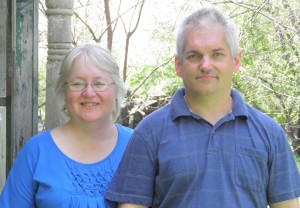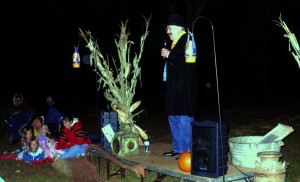Preservervation
The Olson Nature Preserve
A “landmark” step in repioneering the relationship between people and the land in Boone County has been the development of the Olson Nature Preserve (ONP) located along the banks of the Beaver Creek a few miles above the unincorporated community of Loretto.
The story of the ONP began in 1992 when a large portion of the estate of Grant and Bernice Olson, who owned 1,285 acres between Albion and Petersburg, was left to the Boy Scouts, Girl Scouts and the Albion school district. Before these beneficiaries sold this land, Norman Smith, a retired school teacher from Albion, spearheaded an effort to have a portion of the land set aside for educational, preservation, and historical purposes.
Norm directed an extensive feasibility study which included information about the Olsons, the land resource, the history, and the process of finding a suitable institution to hold the land in order to demonstrate that this property was of unique historical and natural value capable of being developed into an outdoor classroom.
The beneficiaries agreed. The Prairie Plains Resource Institute in Aurora, NE, whose mission is to maintain and restore Nebraska ecosystems for education, research, stewardship and community development, agreed to take possession of the property and manage it in partnership with local “stewards.”
The Olson Nature Preserve consists of 77 acres owned by Prairie Plains, with an additional 35 acres leased from a neighboring farm. The ONP includes more than a half-mile stretch of Beaver Creek, a cottonwood grove (an eagle roosting site), wetlands, lowland and Sandhills prairie, and an oak forest covering an extensive east-facing escarpment.
The ONP may also be the site where Omaha Indian chief, Logan Fontenelle, was killed by the Sioux in 1855.
Teachers from area schools utilize the ONP for activities in science, math, language arts, history and art. Students can participate in global Positioning System (GPS) training; a Digital Entrepreneurship workshop incorporating nature photography, software training, layout and design and business skills; and even a course in journalism.
The Albion Area Arts Council partners with the ONP Stewards to present an annual event each Fall that features guided trail walks, a campfire, and a speaker who discusses the area’s native or pioneer past. In 2009 the speaker for this event was Nebraska Secretary of State John Gale who, in keeping with Boone County’s “re-pioneering” activities, wore period attire and spoke of the accomplishments of Nebraska’s original pioneers (below).
- Nebraska Secretary of State John Gale as “Cactus Jack”
The Hosford Farm
 In 2011 Paul & Lori Hosford of Albion partnered with the Nebraska Land Trust to protect the agricultural, ecological, historical, educational and archaeological value of their 546 acres of farmland located southeast ofAlbion. The Hosfords’ cropland and pasture will remain productive agricultural ground, but approximately 60 acres of woodland and many acres of grassland that has never been broken will be protected from all future development.
In 2011 Paul & Lori Hosford of Albion partnered with the Nebraska Land Trust to protect the agricultural, ecological, historical, educational and archaeological value of their 546 acres of farmland located southeast ofAlbion. The Hosfords’ cropland and pasture will remain productive agricultural ground, but approximately 60 acres of woodland and many acres of grassland that has never been broken will be protected from all future development.
In addition to protecting the agricultural and ecological value of their land, the Hosfords paid particular attention to protecting extensive Native American remains located on their property. These include three village sites and in a part of their pasture that has never been plowed, several geometric earthen mounds. Similar mounds have not been identified in Nebraska before, and thus hold significant historic value. The Hosfords’ easement specifies that these mounds may only be studied through non-invasive archaeological techniques, thus ensuring that their unique topology will never be disturbed. (Photo courtesy of Jean Lewis)
The Hosfords use their land for educational purposes, giving tours of the Native American sites to local school children, scout groups and interested adults. The Hosfords are working with both the Nebraska Land Trust and the Prairie Plains Resource Institute to re-establish native plants and to develop walking trails with informative signage in the area surrounding their mounds. This way visitors will have an opportunity to learn not only about the area’s Native American past but it’s ecological past as well.
The Nebraska State Historical Society is currently supervising the salvage excavation of an earthlodge site threatened by erosion, and it is hoped that in time the Hosfords’ pasture can become a field school for archaeological students to excavate during the summer. (Photo of Hosfords courtesy of Jean Lewis)
